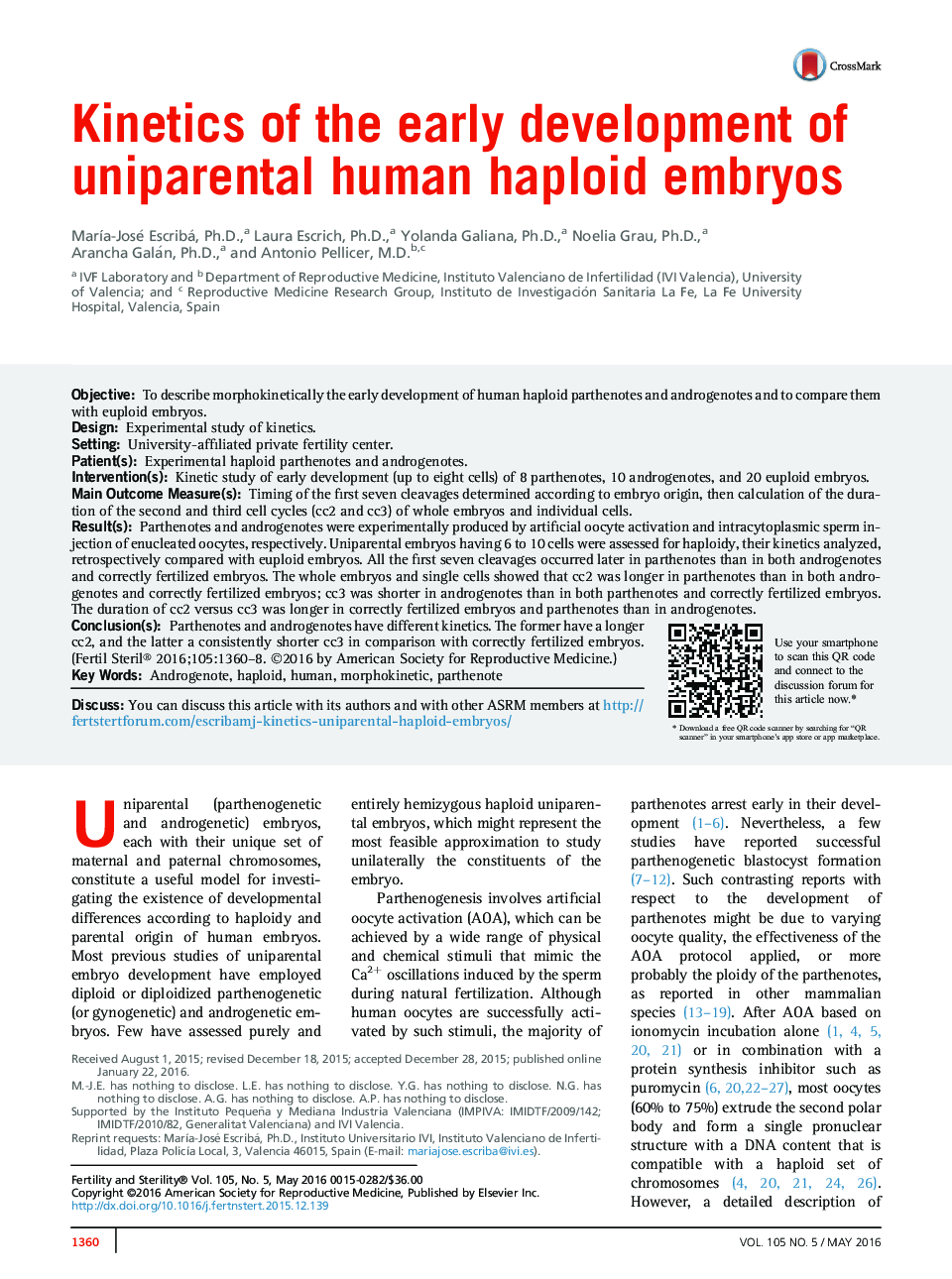| Article ID | Journal | Published Year | Pages | File Type |
|---|---|---|---|---|
| 6178514 | Fertility and Sterility | 2016 | 10 Pages |
ObjectiveTo describe morphokinetically the early development of human haploid parthenotes and androgenotes and to compare them with euploid embryos.DesignExperimental study of kinetics.SettingUniversity-affiliated private fertility center.Patient(s)Experimental haploid parthenotes and androgenotes.Intervention(s)Kinetic study of early development (up to eight cells) of 8 parthenotes, 10 androgenotes, and 20 euploid embryos.Main Outcome Measure(s)Timing of the first seven cleavages determined according to embryo origin, then calculation of the duration of the second and third cell cycles (cc2 and cc3) of whole embryos and individual cells.Result(s)Parthenotes and androgenotes were experimentally produced by artificial oocyte activation and intracytoplasmic sperm injection of enucleated oocytes, respectively. Uniparental embryos having 6 to 10Â cells were assessed for haploidy, their kinetics analyzed, retrospectively compared with euploid embryos. All the first seven cleavages occurred later in parthenotes than in both androgenotes and correctly fertilized embryos. The whole embryos and single cells showed that cc2 was longer in parthenotes than in both androgenotes and correctly fertilized embryos; cc3 was shorter in androgenotes than in both parthenotes and correctly fertilized embryos. The duration of cc2 versus cc3 was longer in correctly fertilized embryos and parthenotes than in androgenotes.Conclusion(s)Parthenotes and androgenotes have different kinetics. The former have a longer cc2, and the latter a consistently shorter cc3 in comparison with correctly fertilized embryos.
